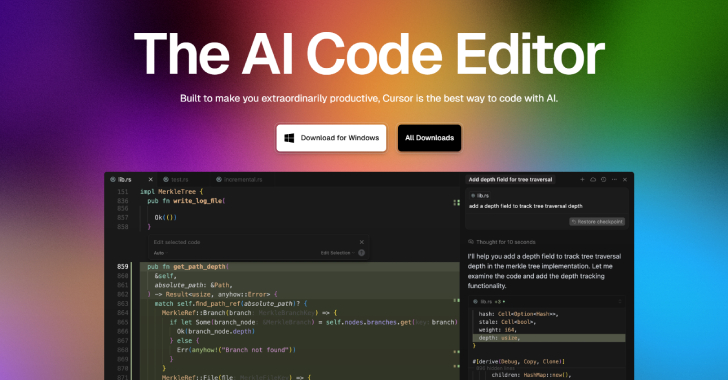
Frequently Asked Questions About Virtual Chief Technology Officer (vCTO)
In a world where technology evolves at an unprecedented pace, businesses are constantly seeking ways to stay ahead of the curve. The role of Chief Technology Officer (CTO) has always been pivotal in guiding organizations through the intricacies of the digital landscape. However, a new trend is emerging in the form of the Virtual Chief Technology Officer (vCTO). This innovative concept offers flexibility and expertise to companies of all sizes. To help you better understand this intriguing development, we’ve compiled a list of frequently asked questions about vCTOs.
- What is a Virtual Chief Technology Officer (vCTO)?
A vCTO, short for Virtual Chief Technology Officer, is a highly experienced technology professional who provides strategic guidance and technical expertise to businesses on a remote basis. They serve as a bridge between an organization’s executive leadership and its technology initiatives. While they don’t hold a full-time, in-house position, vCTOs play a crucial role in shaping a company’s technology strategy and direction.
- How does a vCTO differ from a traditional CTO?
The primary difference between a vCTO and a traditional CTO lies in their employment model. A traditional CTO is a full-time, in-house employee of a company, whereas a vCTO operates remotely and is typically engaged on a part-time or project-specific basis. This distinction allows vCTOs to work with multiple clients simultaneously, bringing a diverse range of experiences and insights to each engagement.
- What are the benefits of hiring a vCTO?
Hiring a vCTO offers several advantages, including:
Cost Savings: Engaging a vCTO can be more cost-effective than hiring a full-time CTO, as you only pay for the services you need when you need them.
Expertise: vCTOs bring a wealth of experience from working with various organizations, allowing them to provide well-rounded and innovative solutions.
Flexibility: Businesses can scale their vCTO’s involvement up or down as their needs change, providing agility in adapting to evolving technology landscapes.
Objective Perspective: vCTOs can offer an unbiased and fresh perspective on your technology strategy, as they are not influenced by internal politics or preconceived notions.
Access to a Network: Through their extensive professional network, vCTOs can connect your business with industry experts and potential partners.
- When should a company consider hiring a vCTO?
Companies should consider hiring a vCTO in various scenarios, such as:
Startup Stage: Startups can benefit from vCTOs’ expertise in building technology infrastructure from the ground up without the long-term commitment of a full-time CTO.
Interim Leadership: During a CTO transition or vacancy, a vCTO can step in to provide continuity and strategic direction.
Specific Projects: When embarking on a specific technology project, hiring a vCTO can ensure that the project is executed efficiently and aligns with the company’s overall strategy.
Lacking In-House Expertise: If an organization lacks the technical expertise needed for a particular initiative, a vCTO can fill the knowledge gap.
- How do you find and hire a vCTO?
Finding the right vCTO for your organization involves a few key steps:
Define Your Needs: Clearly outline your technology goals and the scope of the vCTO’s role, including specific skills and expertise required.
Search and Network: Look for vCTOs through professional networks, platforms, and referrals. Consider consulting with technology-focused agencies or firms that specialize in providing vCTO services.
Evaluate Candidates: Assess candidates based on their experience, track record, and compatibility with your organization’s culture and goals.
Contract and Onboarding: Once you’ve selected a vCTO, negotiate the terms of the engagement, including compensation, expectations, and deliverables. Properly onboard them into your organization to ensure a smooth transition.
- Can a vCTO replace a full-time CTO?
While a vCTO can provide valuable expertise and guidance, they may not entirely replace a full-time CTO in certain situations. A full-time CTO typically offers continuous, day-to-day oversight of a company’s technology operations, which can be essential for larger organizations with complex needs. However, for many businesses, a vCTO can serve as a cost-effective and strategic alternative or complement to a full-time CTO.
- Are there any security concerns with a remote vCTO?
Security is a valid concern when working with remote professionals, but it can be mitigated through careful selection and cybersecurity measures. When hiring a vCTO, ensure that they have a proven track record of handling sensitive data and maintaining the highest security standards. Additionally, establish clear data protection and confidentiality agreements to safeguard your organization’s information.
- What industries can benefit from hiring a vCTO?
vCTOs can benefit a wide range of industries, including:
Technology Startups: vCTOs can help startups build robust technology infrastructures and make informed technical decisions during their early stages.
Manufacturing: Manufacturers can leverage vCTOs to implement automation, IoT solutions, and supply chain optimizations.
Healthcare: Healthcare organizations can benefit from vCTOs’ expertise in implementing electronic health records (EHRs) and ensuring compliance with data security regulations.
Retail: Retailers can use vCTOs to enhance their e-commerce platforms, implement data analytics, and improve customer experience through technology.
Financial Services: Banks and financial institutions can engage vCTOs to develop and secure their fintech solutions and digital banking services.
- What challenges might arise when working with a vCTO?
While vCTOs offer numerous benefits, challenges can arise, including:
Communication: Effective communication is crucial when working remotely. Establish clear lines of communication and set expectations for regular updates and meetings.
Integration: Integrating a vCTO into your organization’s culture and workflows may require time and effort to ensure a seamless fit.
Alignment: Ensure that the vCTO’s goals align with your business objectives to maximize their impact.
Time Zones: If your vCTO operates in a different time zone, coordinate schedules to minimize disruptions and ensure accessibility when needed.
- What is the future of vCTOs in the technology landscape?
The future of vCTOs appears promising, as businesses continue to seek agile and cost-effective solutions to their technology needs. With advances in remote work technology, the pool of highly skilled vCTOs is expected to grow, providing more options for organizations of all sizes. As the digital landscape continues to evolve, vCTOs will likely play an increasingly vital role in helping businesses navigate the complex world of technology.
In conclusion, the concept of the Virtual Chief Technology Officer (vCTO) is reshaping how businesses approach technology leadership and strategy. By providing flexible access to top-tier expertise, vCTOs offer a valuable solution for organizations looking to stay competitive in an ever-changing digital world. As technology continues to advance, the demand for vCTOs is expected to rise, making them an integral part of the modern business landscape.
Contact Cyber Defense Advisors to learn more about our Virtual Chief Technology Officer (vCTO) solutions.





